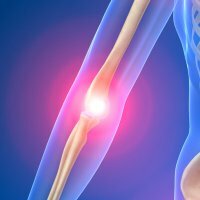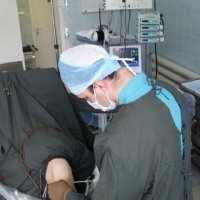Conservative treatment of pyloroduodenal stenosis

The extent and causes of narrowing of the pyloric department can be diagnosed by gastroduodenoscopy and biopsy, and also by fluoroscopic examination.
There are three stages in the development of the disease. The stage of compensation, subcompensation and decompensation.
Stages of the disease.
The first stage of the disease course - compensation, has no external manifestation, and is characterized by a weakened clinical picture, as the stomach easily enough overcomes the difficulty of food through the narrowed passage. Symptoms of the disease are not felt, except for the usual symptoms of peptic ulcer, perhaps a little more often a feeling of heartburn and fullness of the stomach. The general condition of patients is characterized as satisfactory.
In the subcompensation stage, a feeling of heaviness and fullness of the stomach, a frequent eructation with the release of the smell of rotten eggs, is amplified, this is due to a long delay in food in the stomach. There are colicky pains, accompanied by rumbling in the abdomen and constant nausea. Patients are concerned about daily vomiting, whose vomit contains the remains of unboiled food. Patients noticeably lose weight, with a hungry stomach in your stomach you can hear "the sound of waves."
The decompensation stage is characterized by an even more severe deterioration of the patient's condition, vomiting increases, and contains malodorous, long-lasting remnants of food. There is dryness of the skin, which is easily collected in the folds. A stretched outline of the stomach is seen through the skin. And also there is an increased thirst, due to dehydration, dry mouth and mucous membranes of the mouth, on the tongue. In some patients, there is a strong prolonged diarrhea that occurs due to ingestion of fermentation products from the stomach into the intestine.
With prolonged progressive decompensated course of the disease, further expansion of the walls of the stomach results in the loss of any possibility for restoring gastric motility. Along with this, there is microbial colonization of the stomach, due to the constant presence of fermentation products, which subsequently leads to difficulty in the intake of food through the mouth. Together, these signs lead to complete depletion of the body, its dehydration and disruption of the acid-base balance.
Treatment of pilorodenal stenosis.
Patients with clear signs of peptic ulcer exacerbation are prescribed enhanced treatment. Conservative treatment of pyloroduodenal stenosis is carried out for 3 weeks. As a result of the treatment, patients have a decrease in the edema of the pylorus's mucous membrane, as well as the initial part of the duodenum. Reducing the amount of infiltrate in the stomach contributes to improving the patency of the gatekeeper. With the above signs of improving the patient's condition, it can be said that surgery is not required at this stage.
Further development of the signs of the disease is a mandatory indication for the operation. Before the direct surgical intervention, a long-term correction of pathological disorders is required, or, in other words, antiulcer therapy, which consists in repeated washing of the stomach, 3-4 times a day, intestinal nutrition of the body, replenishment of bcc, and mandatory correction of the electrolyte balance. The duration of the preoperative period is from 5 to 6 days, and at the sub - and decompensated stage of the disease treatment is performed until the main indicators are fully restored. The patient is allowed to take only soft food, as well as the obligatory intake of milk with sugar.
Preoperative conservative treatment of pilorodenal stenosis, with severe disorders of acid and electrolyte balance in the sub and decompensated stage of the disease includes complex preoperative preparation of the patient, which is as follows:
- is treated with hypovolemic disorders, with administration of a solution of albumin, protein and albuminous sodium chloride solution. The introduction of crystalloids is recommended for the adjustment of acid and electrolyte balance. In addition, the patient is injected every 6 hours with an isotonic glucose solution. With conservative treatment of stasosis( pilorodenal), mandatory monitoring of the patient's general condition is necessary - constant monitoring of blood pressure, pulse and hourly diuresis, circulating blood volumes, acidity, hemoglobin, plasma electrolytes, hematocrit, creatine, urea are monitored;
- complex antiulcer treatment;
- systematic administration of aspiration of stomach contents;
- as well as adequate parenteral nutrition.
The qualitative preparation of preoperative preparation in patients with ulcerative stenosis, significantly reduces the disturbances of homeostasis caused by the underlying pathology, as well as the accompanying serious illnesses. In this case, it is possible to significantly reduce the degree of surgical and anesthesia risk in surgical intervention, it is also possible to reduce the percentage of operational mortality and postoperative complications.
Tactics treatment of patients with pyloroduodenal stenosis is not a sufficiently studied area of medicine. Currently, an active search for new pathogenetic methods of diagnosis and treatment of patients.



